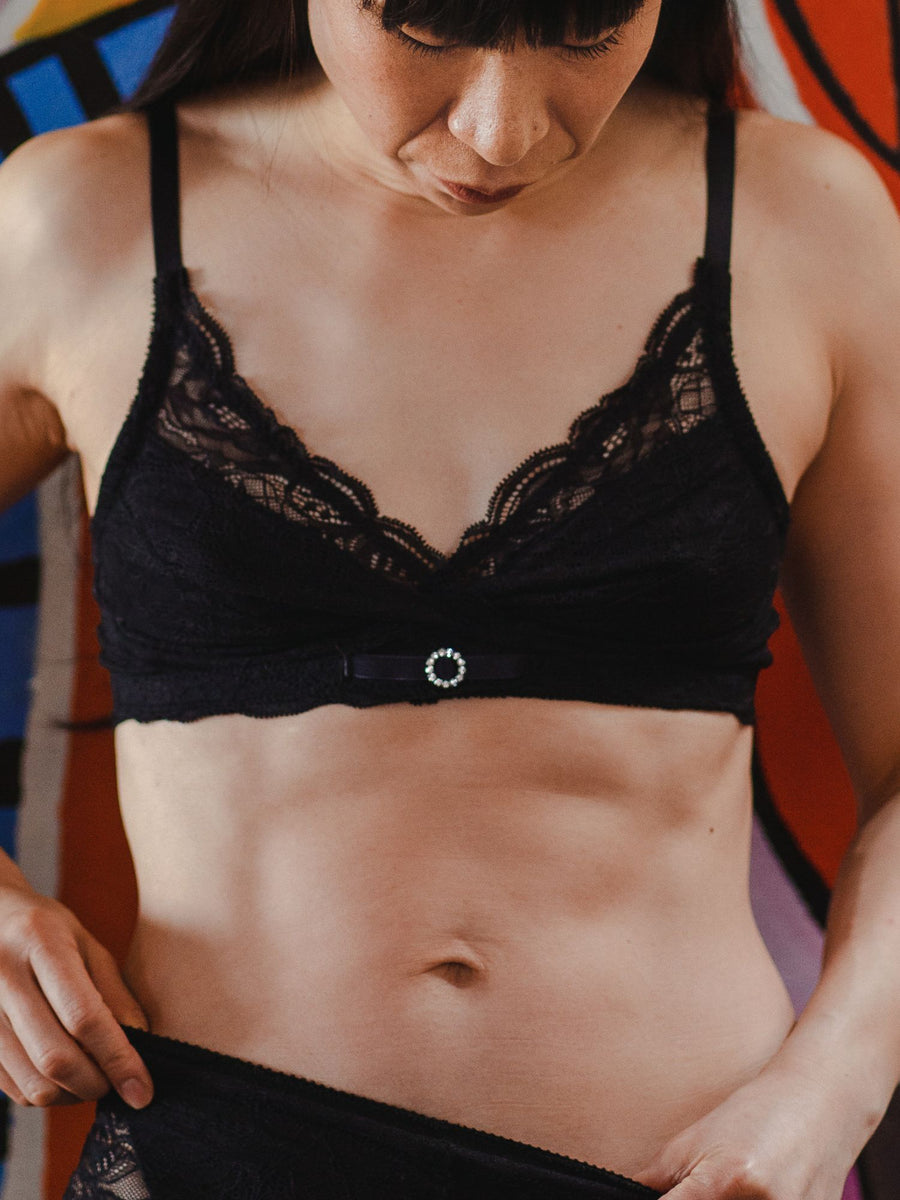Menopause & Breast Health

Surprisingly, we’ve found over the years of fitting and supporting thousands of women in menopause have very similar experiences to women postpartum in terms of symptoms and needs.
To understand how your beasts change during menopause let’s look at what are breasts are and how they work - because most of us have no clue!
Physiologically both males and females have a nipple and an areola. Breasts are made up of Fatty Tissue, Milk Producing Glands and Connective / Fibrous Tissue - and of course blood vessels, lymphatic system.
Male breasts are different from female breasts because they don't support breastfeeding or experience hormonal fluctuations. This means that the fatty tissue in male breasts doesn't react in the same way as in women.
SO WHAT HAPPENS IN MENOPAUSE?
In your late 40s, you’ll start to notice some changes as you approach menopause—the period known as perimenopause. Your periods will be less frequent, and hormones begin to change, your breasts may feel tender and more lumpy you’ll start to notice changes in the size and shape of your breasts.
WHAT’S HAPPENING TO YOUR BREASTS
First off, it's important to recognize that your experience with menopause will be unique to other women’s. Some might not notice many changes in their breasts, while others might go through more noticeable transformations.
One of the primary reasons behind these changes is a drop in estrogen and progesterone levels. These hormones play a crucial role in maintaining the appearance of your breasts.
Your milk system starts to shut down, glandular tissue in your breasts shrinks. That causes them to become less dense and more fatty, which can lead to sagging. You may also notice that your breasts aren't as full as they used to be, and their size may change.
CHANGES IN BREAST SIZE AND SHAPE
Did you know, a recent study found that 1 in 5 women went up a bra size after menopause (typically due to weight gain which is common because our metabolism slows down). When your current bras don’t fit you anymore, it’s time for bras that offer a supportive lift to prevent any pulling of your skin.
If you're feeling self-conscious or uncomfortable with the shifts in your breasts, getting a well-fitted, supportive bra can do wonders for your self-esteem and overall comfort as your breasts change.
As an expert in supporting women with undergarments from Motherhood through Menopause, we have designed our bras with you in mind. Here are a few of our key design features that can make a difference:
Breathable Fabric: Are your breasts sticky and sweaty and make you feel gross? Do you get hot flashes? Our bras are lined with organic cotton so your skin can breathe, and sweat doesn’t build up.
Flexibility and Comfort: Let’s be real, at this stage comfort takes precedence over pretty and restrictive bras. Our fabrics let you move freely without feeling constricted(goodbye red marks and discomfort).
Healthy Materials: With all the hormonal changes, you want to lower the chemical load you put on your skin. It's always a good idea to choose bras made from materials that are gentle and non-toxic for your skin and body to prevent any irritations.
Remember, there's no need to stress about the changes your body is going through during menopause or perimenopause. These are all perfectly natural, and the right choice of undergarments can help you feel at ease and confident throughout your journey.
Check out the bra that menopausal women LOVE here.
BE BREAST AWARE
Being breast aware means getting to know your own body. Get comfortable with what your breasts normally look and feel like, and how they may normally change over the course of the month. If you are breast aware, you may notice unusual changes to your breasts sooner.
Did you know that before your period, fluid builds up in your breasts, making them feel more swollen, tender, or painful than other times of the month?
The good news is that researchers found relaxation techniques or massaging achy breasts can relieve discomfort. Try a breast massage - even 10 minutes a day can help with stress relief, improving circulation, and releasing pain and breast tenderness.
WHAT CHANGES SHOULD I LOOK FOR?
It's common to have a bit of lumpiness in your breast tissue. In fact, most of us do. But here's the deal: you should get to know what's usual for you. That way, you'll notice any changes, especially during your menstrual cycle.
During menopause, you may also notice that your breasts feel lumpier. This happens because you have more fatty tissue in there, and hormonal changes are at play. These lumps are usually harmless, resembling small grape-like structures.
However, if you notice any unusual changes, don't postpone seeking medical advice until your next checkup.
Lumps that are new, hard, or do not move easily are more worrisome. You should also feel for any lumps in your armpits.
It's recommended to do monthly breast self-exams and have a healthcare provider or nurse check things out once a year. These exams help catch any potential concerns early. But here's the thing - if you're breast aware, you'll be the first to spot any changes that might be an early sign of something to discuss with your healthcare provider.
And remember, self-care also means showing up for yourself and being your own advocate. Learn about redefining menopause and midlife in my friend Samantha-Montpetit-Huynh's blog post. Find answers to questions you may be too shy to ask, such as regaining your confidence during menopause.?”
With this info and the High Heels & Hot Flashes event, we hope you can continue learning and sharing this knowledge with the amazing women around you.
Let’s support one another where healthcare falls short.









Leave a comment